Greeting, 3d-world stranger. In this humble place I'll share some of my works, thoughts, hopes and achievements.
Feel free to share your thoughts as well. I really like to read some valuable feedback and critical comments.
Well, I don't use image textures. I use SP ).
I tried to do some procedural surfaces in Blender too and I feel that I am getting there (pretty slowly I have to add). But it is a question of quality of life. It is so convenient to create all the textures I need in SP. I almost force myself to do that in Blender.
Thanks, ![]() spikeyxxx I like that series too. Gonna do the first atomic bomb next, the Little Boy, the one that was dropped on Hiroshima .
spikeyxxx I like that series too. Gonna do the first atomic bomb next, the Little Boy, the one that was dropped on Hiroshima .
It is going to be a good contrast -- that print press and an atomic bomb. An explosion of wisdom and knowledge + an explosion of cruelty and literally hell. Both done by human kind.
Did I misunderstand how SP works? I thought it created maps (image textures). It creates them procedurally, but they are still 2D textures in the end. Or can you, without unwrapping, directly texture your model with SP?
Edit: Sorry I was thinking about Substance Designer...But still can you paint without unwrapping?
You have to unwrap, yes.
But it is ok with me cause I can export my model to wherever I want with textured maps of all kinds I need. I don't want to create a model just for the fancy screenshot via f12, I think it is kinda useless and locked within the program. Plus it is a good practice. For the instance: there are 64 textures in Reitwagen and it was really good to play with them.
I wish there were more tightly packed courses that cover the whole process of creating an asset, not just the initial stage.
Something like the Chest one + various complexity. I know that UVs might seem boring and dull but that's a part of the drill.
What I meant is that when you unwrap, you get 2 dimensional textures and this would not be doable (this specifically applies to wood):
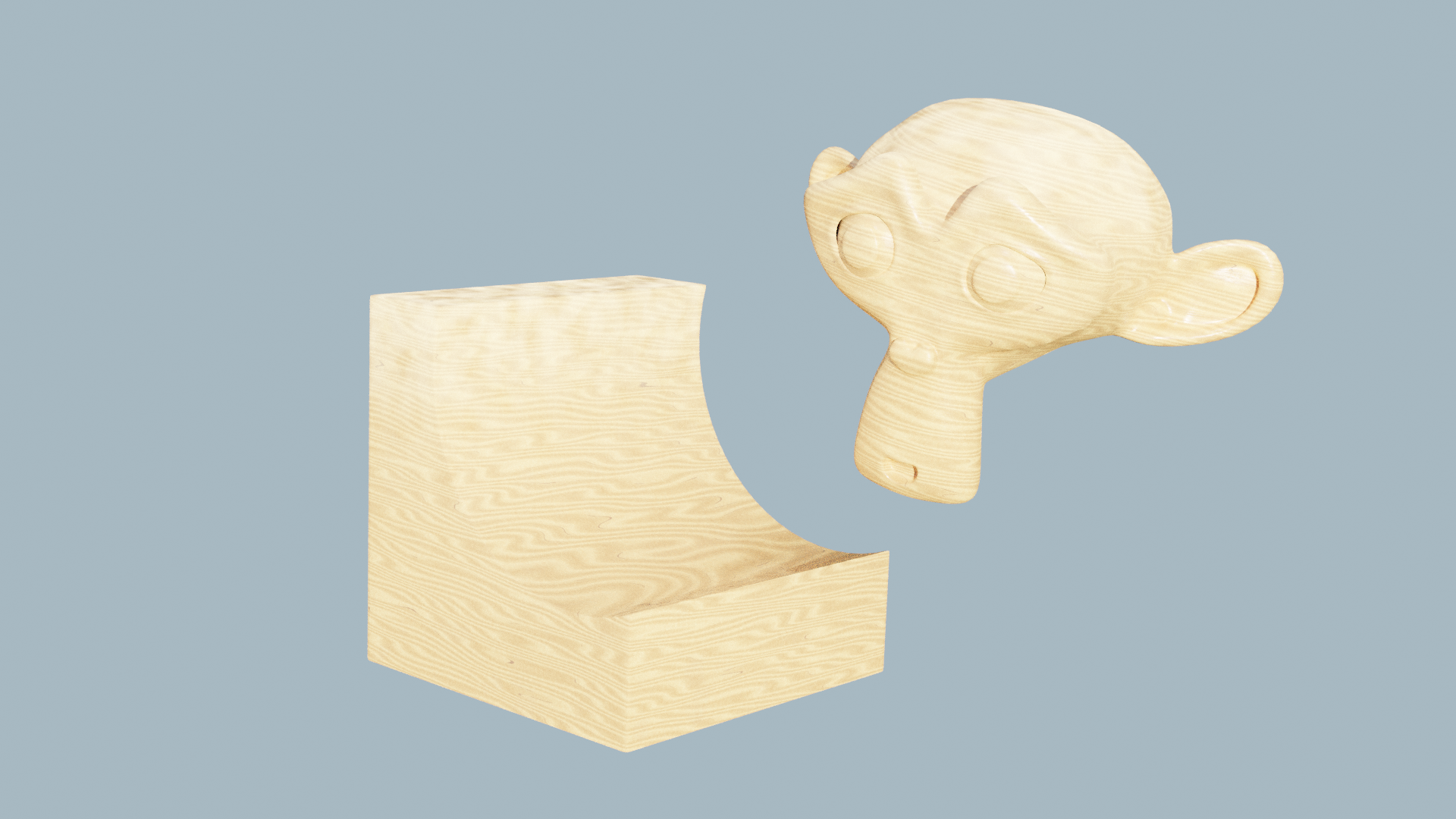
But maybe this is possible with SP?
As for portability, you could texture it using a procedural shader and then bake that into textures...
Thanks, ![]() spikeyxxx
spikeyxxx
For some reason I just avoid Blender texturing. I don't know why. I force myself into it but nothing happens. Maybe I just block it like some bad memories xD
But I really love sculpting / modeling and animating tools.
As for the model -- I hope that everything would turn out all right eventually) But I'll keep an eye on these naughty woods.
Yes, the main thing is you get a satisfying result, whatever software or method you use!
I had chance to watch that Stephen Fry film earlier today - that was interesting to see the craftsman build it using the old fashioned tools! Big respect to how he chiseled the thread on the spindle, he must be a patient guy I reckon. :-)
Step 3: it's almost done. Have to add these ink-pads and some letters for the set.
Can't wait for the texturing part. The model has wood, metal, ink, paper, rust + so many scratches and spots.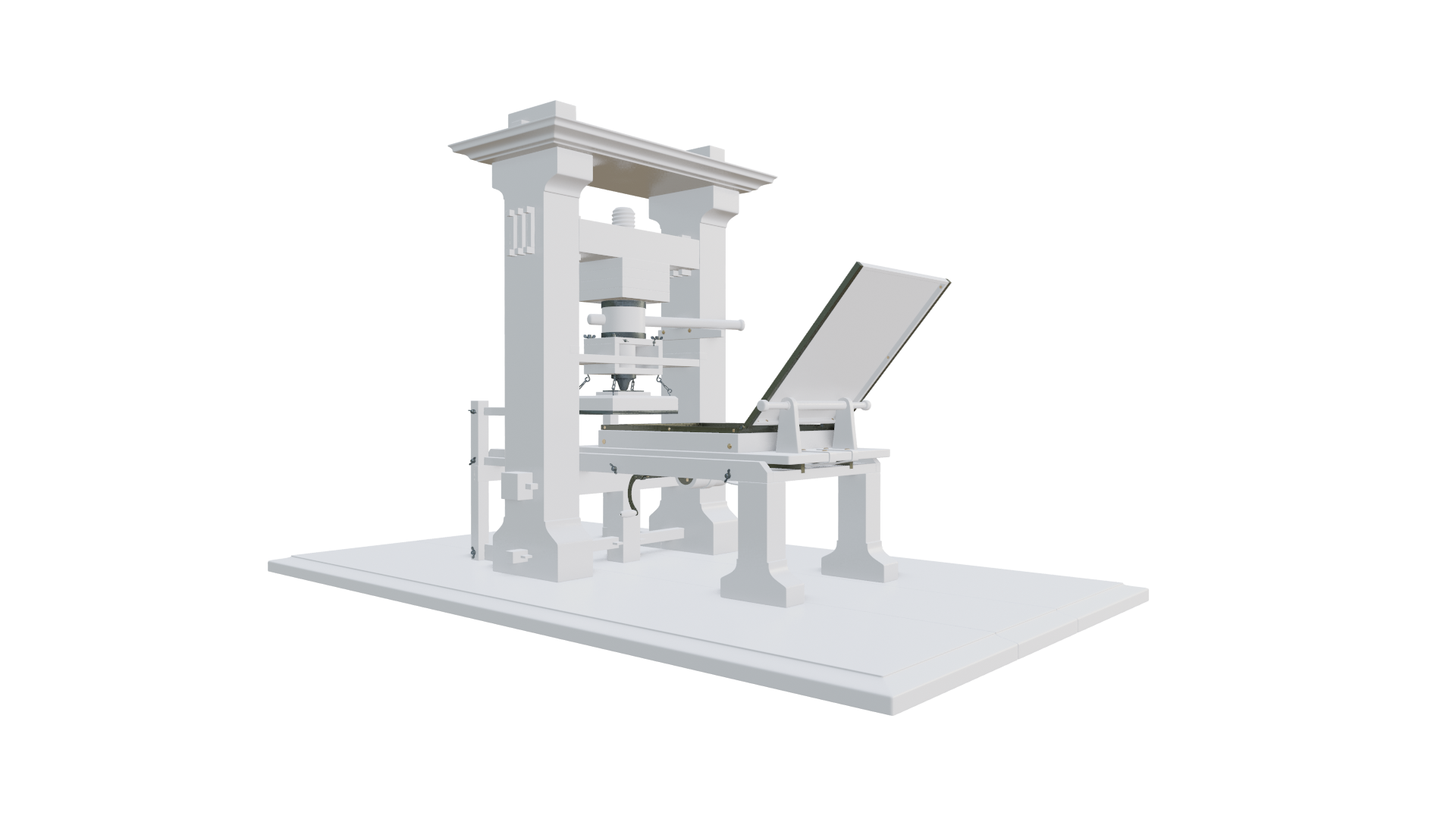
It might be cool to research the first letters that were printed. Give a homage to the first page ever. but......that may be a lot more work lol.
Yes, ![]() blanchsb, I was thinking about that) I know that Gothic set and I know that Bible page. But that would be a ton of work for sure. Plus it's kinda repetitive and doesn't teach a thing.
blanchsb, I was thinking about that) I know that Gothic set and I know that Bible page. But that would be a ton of work for sure. Plus it's kinda repetitive and doesn't teach a thing.
So I'd go for "Gutenberg press modelled by Michael Mirn" instead) this whole thing is a homage after all!
Step 4: Last set of renders before I go SP (and back to lessons again!)
Btw: these ink-pads were really easy to make. Just a little bit of proportional editing with random falloff. Really powerful tool.
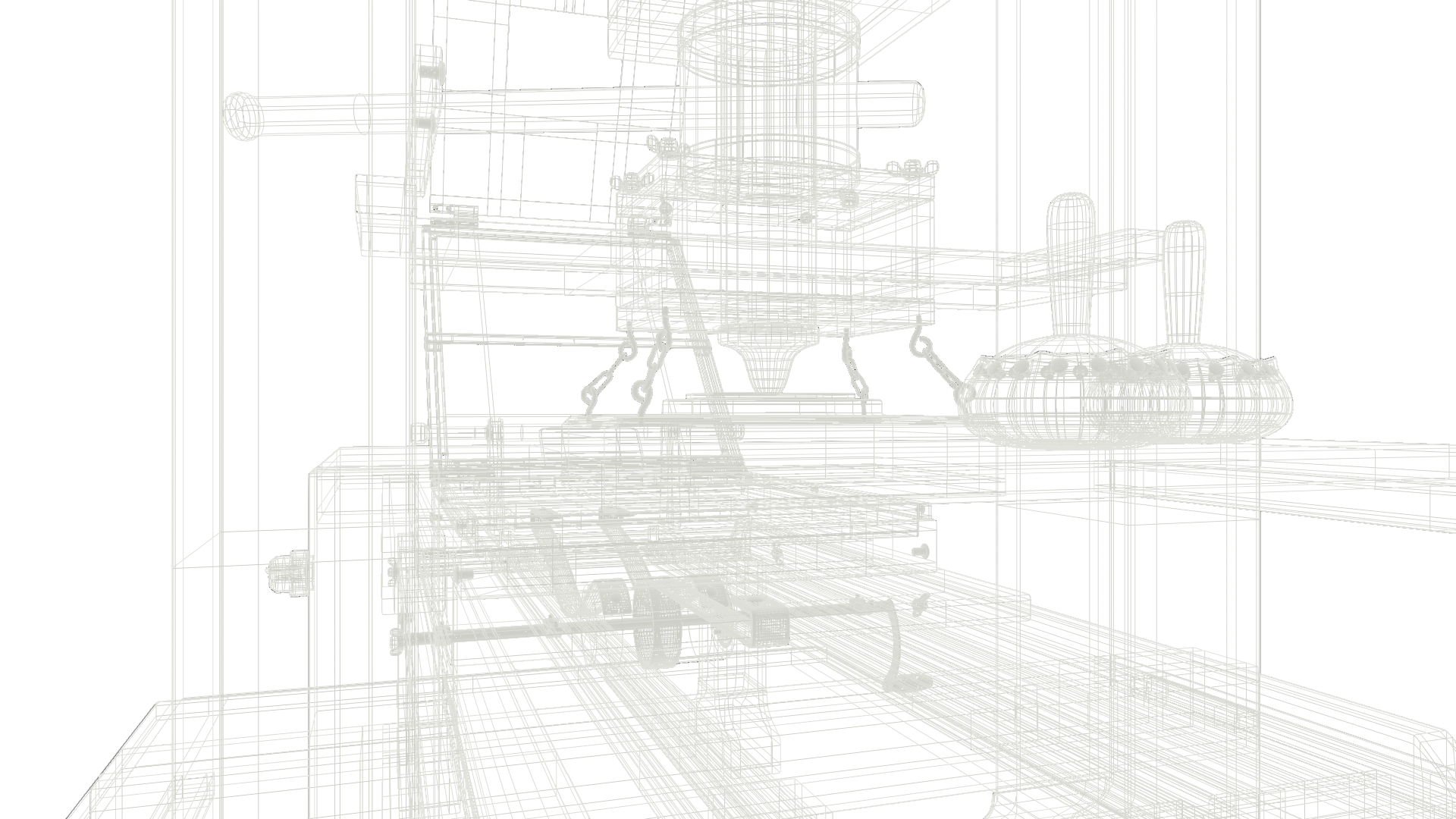
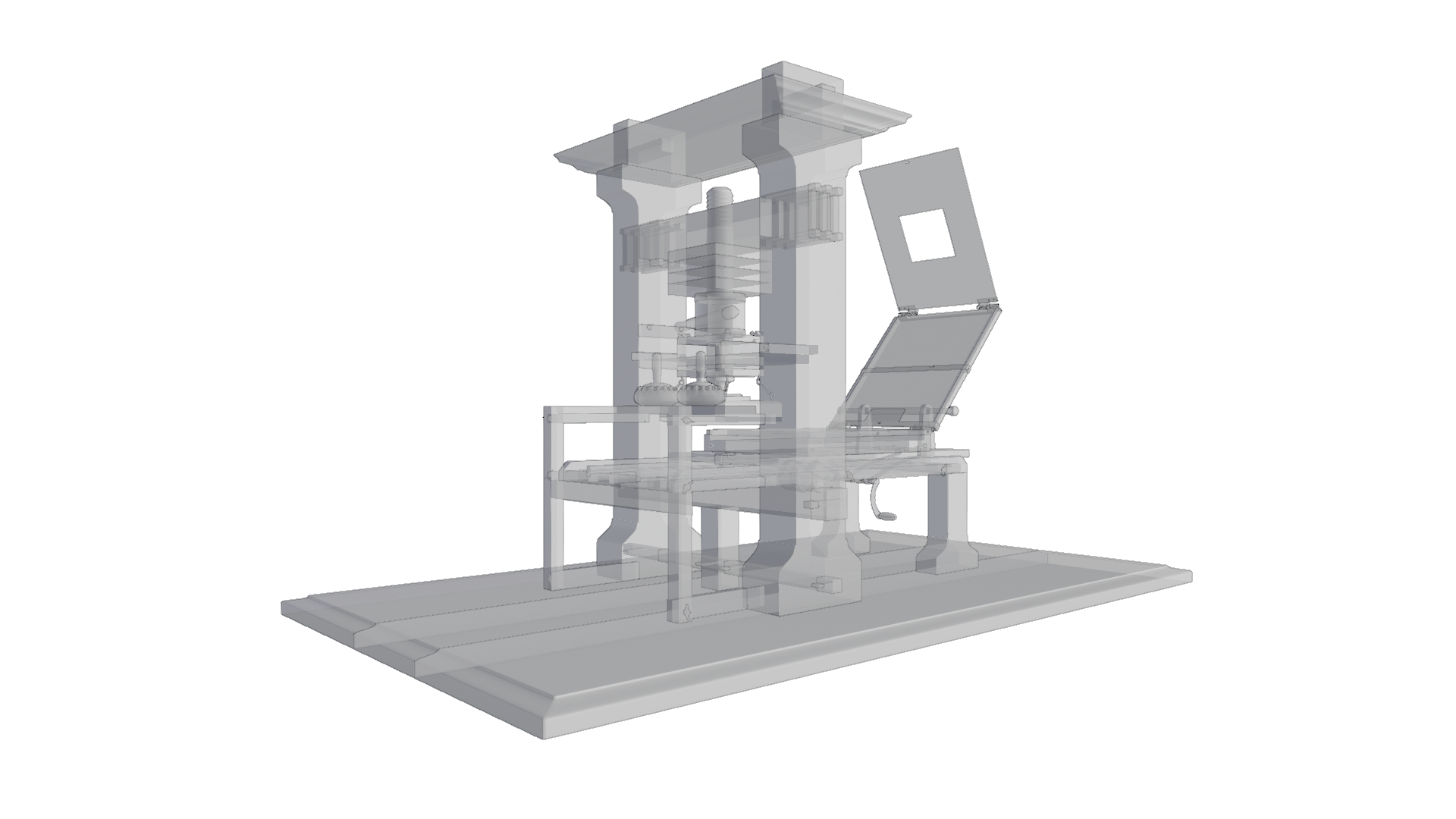
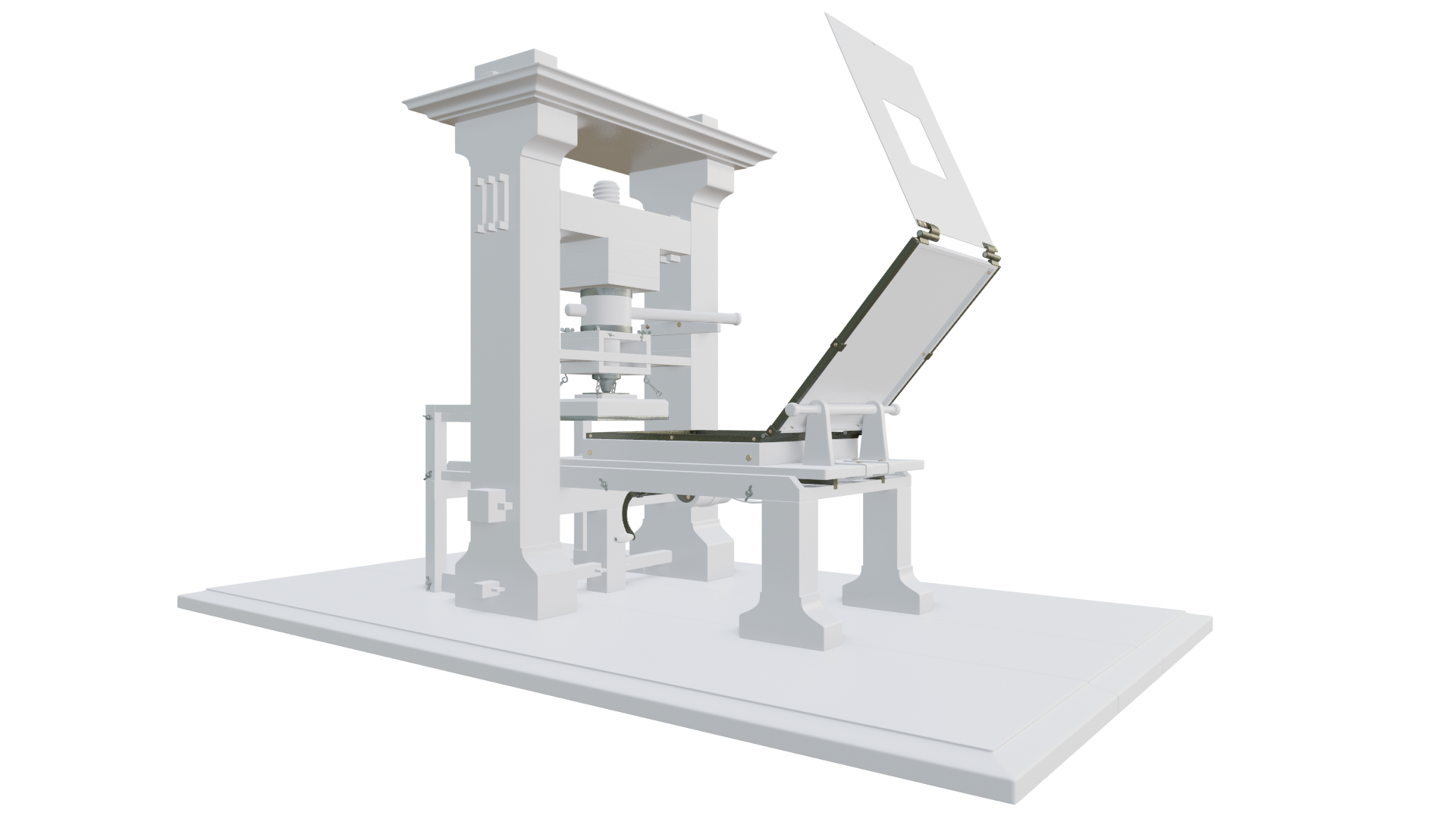
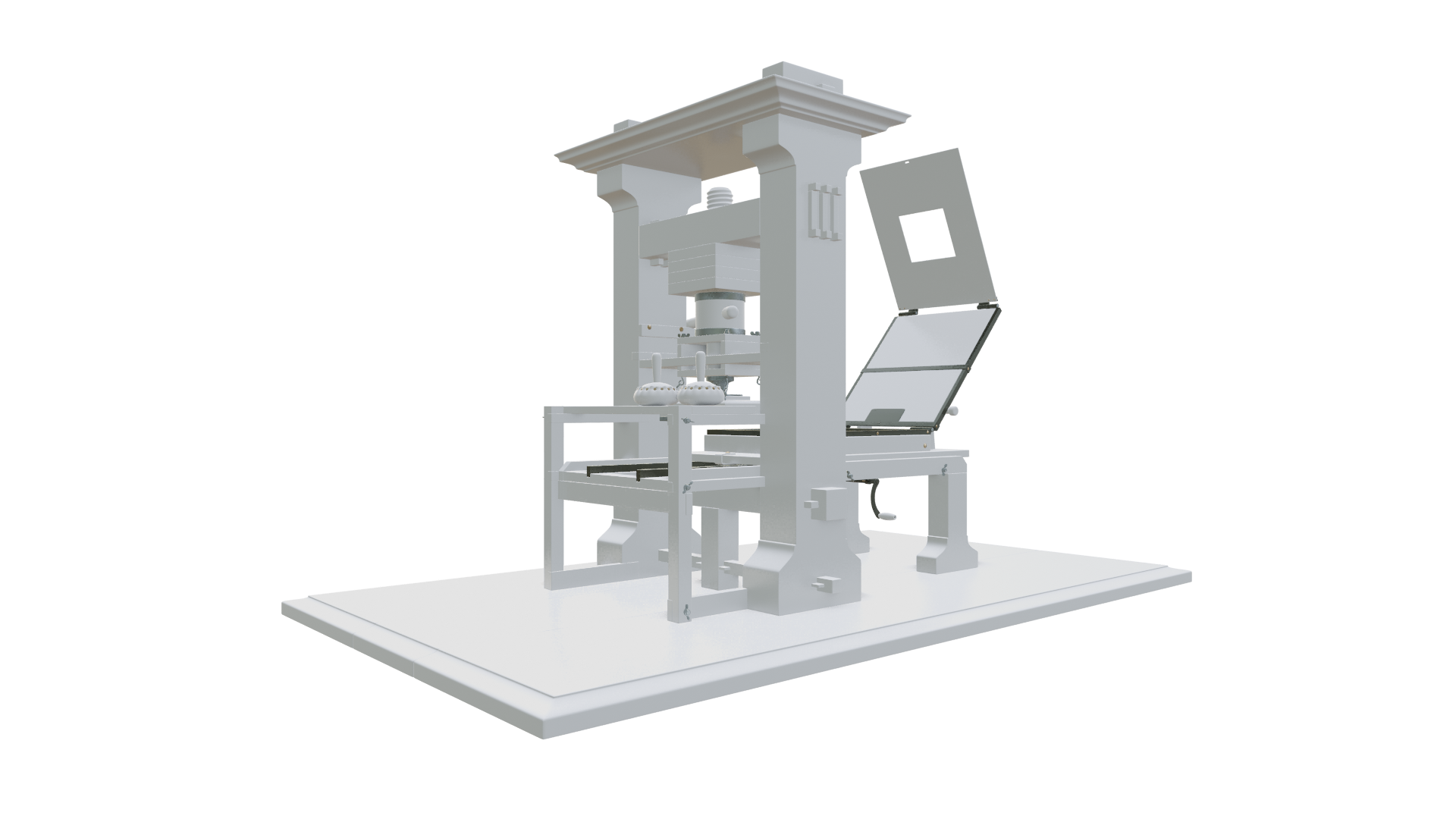
![]() blanchsb
blanchsb
Thanks! It is funny cause I was expecting lots of sculpting and retopo with these. But it took like 15 mins to complete them (started with 16 verts cylinder).
It's looking great even before you've done any texture work which is a really good sign! 👍
I know you are still working on this Michael, but might it be nice to have those ink pads in a slightly more random position - like if somebody had put them down after using them?
![]() beefkeef
beefkeef
Thanks, Keith)
Sure, I'll try to make it as lively as possible for a >500 years old press)
I was thinking about positioning these pads (and haven't found a good place yet). I can't rotate and put one pad on its side -- it has to be oriented to the surface (or rather ink). Leaving them on that lettering box would be weird. Same goes for press.
But it is good do know that they look out pf place. Gonna fix that for sure.
I hope some textures will bring them a better / natural look.
Step 5: it is done. Gutenberg's press:

Mirror image transfer is known to mankind since ancient times: Sumerian seals-cylinders, cartouches of the Egyptian pharaohs, coinage.
Printing itself also appeared more than a thousand years ago. The first printed text is the Diamond Sutra, 868.
As early as the 10th century, Chinese typographers used wooden bars with carved hieroglyphs to transfer images to paper. In 1042, the Chinese blacksmith Bi Shen invented typesetting, but the method did not become popular due to the large number of characters needed for typing: more than 40,000.
However, mass printing did not occur until after the advent of the Gutenberg printing press, which was able to combine disparate practices and make printing simple, affordable and cheap.
Johann Gutenberg was born at the beginning of the 15th century (there is no exact data on the birth of the printer). He trained as a jeweler and lived in Strasbourg, making mirrors and polishing precious stones.
According to eyewitnesses, already in 1438, the workshop of Gutenberg was working on the prototype of the printing press.

In 1448, Gutenberg moved to Mainz, where he borrowed 1,600 guilders to develop a mechanism whose description was a trade secret.
Lenders have become cousin Johann Arnold Galtus and Mainz merchant Johann Fust.
In the middle of the fifteenth century, the first works of the printing house were published. They were calendars, indulgences, and the Latin grammar of Aelius Donatus. In 1454, Gutenberg's main book, the Bible, was published. Two folios of 1282 pages with a set of forty-two lines.
In 1455, Johann Fust demanded repayment of the debt with interest and sued Gutenberg.
Peter Schaeffer, Gutenberg's best printer, testified against the latter in court. According to the court's decision, the printing house with all the equipment, fonts and Bible set went to Fust.
Fust hired Peter Schaeffer, a former printer of Gutenberg, and from 1457 continued the successful operation of the printing house. Peter Schaeffer married the daughter of Johann Fust; their sons, Johann and Peter the younger, also devoted their lives to printing.

The bankrupt Gutenberg was exiled from Mainz and only three years before his death, the printer was allowed to return to the city. Gutenberg entered the service of the Archbishop of Mainz, Nausaut, and managed to publish several more books.
On 3 February 1468, Johann Gutenberg died in Mainz.
Before the advent of the printing press, books were copied by hand and were the property of the Church and the aristocracy. In medieval Europe, there were about 30,000 books, which were rare artifacts, relics, the property of selected lords.
The Gutenberg printing press made the paper word accessible and significantly accelerated the spread of scientific, secular, and educational literature.
Thanks ![]() spikeyxxx .
spikeyxxx .
The more I go procedural the more I like it. It is so much cleaner and cryspy as a result. The next one is going to be an atomic bomb and I'll try to texture it procedurally.
But before that I'm gonna do an animation and it will be combined with three local courses. It a learning place after all)